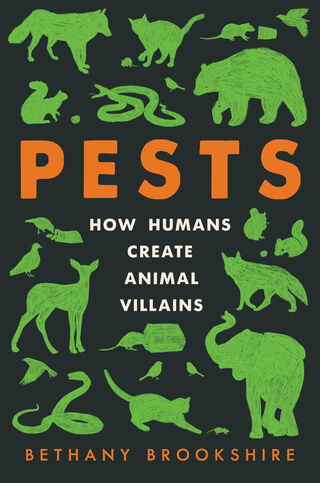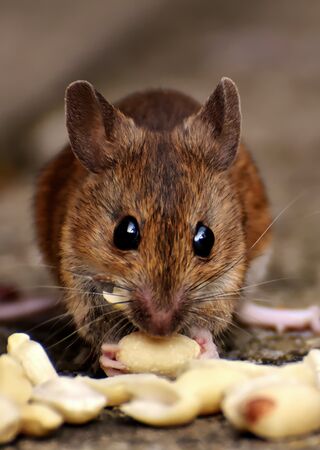Environment
Calling Animals "Pests" Is More About Us Than Them
A new book asks why we consider some animals to be pests and others not.
Posted December 6, 2022 Reviewed by Michelle Quirk
Key points
- Bethany Brookshire's new book explores the ways that humans have come to despise certain animals.
- We could get rid of pests—not by changing them, but by changing ourselves.
- There are ways that might work a lot better for both us and the animals who bug us.

Our relationships with nonhuman animals (animals) are complex, challenging, and paradoxical. We allow dogs and cats to breed themselves to death and continue to harm and kill other animals and destroy their homes at unprecedented rates as we take over and destroy the natural world.
Often we bring other animals in who actually begin to disrupt ecosystems for us, such as cats, Burmese pythons, or even horses. We then label them as "pests" as well, when their actions are no longer acceptable to us.
Many of the animals who find themselves being harmed and killed are referred to as "pests" or "trash animals," and it's useful to figure out why these demeaning labels are used to describe some animals but not others. These words are conveniently used because it allows us to get rid of them however, wherever, and whenever we choose.
Along these lines, I was pleased to learn of a new book by Dr. Bethany Brookshire titled Pests: How Humans Create Animal Villains.1
Here's what Bethany had to say about her important, thought-provoking, and timely book.
Marc Bekoff: Why did you write Pests?
Bethany Brookshire: I’ve been fascinated by the concept of pests for years now, ever since I wrote a piece back in 2016 about the earliest evidence of house mice. I loved the idea that we’ve had house mice since we’ve had houses, before we even started farming. I also realized around that time that every place I went to had its “rat.” Sometimes it was a rat, sometimes a pigeon or raccoon, sometimes even a giant land snail, but every place I went seemed to have an animal that people hated, one that caused them endless problems.

I began to realize that this wasn’t about the animals. It was about us—what we expect and want and believe about the world we live in. I began to see that we hate animals because they aren’t living up to our expectations. And I learned that the way that people think about animals in Western culture is not the only way, and it’s not even the way that might serve us best. We could get rid of pests—not by changing them, but by changing ourselves.
MB: How does your book relate to your background and general areas of interest?
BB: It doesn’t! Not really. My original scientific training was in neuroscience. But after I left academia and took up science journalism, I felt the freedom to be truly curious, to dig into everything and see what fascinated me. I kept coming back to how humans perceive their environments, how they see their place in the world. And since researching the book, you could say human–wildlife interaction has become my new beat. One source suggested I should submit it for a master’s degree. But that seems like an awful lot of trouble.
MB: Who is your intended audience?
BB: Anyone who has ever hated an animal. Anyone who’s had a squirrel in their garden, a rat in their sewer. A mouse in the house! Anyone who’s ever been curious as to why we love some animals and hate others.
MB: What are some of the topics you weave into your book, and what are some of your major messages?
BB: My book is organized around five themes—five ways in which we come to hate the animals around us. The first theme is fear and disgust—why is it that some animals creep us out. The second is niche, how humans act as ecosystem engineers—and why animals end up moving in. The third is belief. So much of whether we love or hate an animal comes down to what we believe—beliefs that are often at odds with the animal’s behavior. The fourth theme is power. In the Western view, humans are the top dog, and any animal that challenges our supremacy quickly becomes the enemy. The final theme is habitat. When we move into new areas, we often drastically change what they look like and the species that thrive there. We expect animals to go away. When they stay, when they adapt, and when they persist, we don’t exactly greet them with open arms.
There are several conclusions to draw from these themes, but one is this: So much of the way we view animals is based in our idea that we are in charge, that we have dominion over our environments. But that’s not a universal human view. We do not have to be this way. I got the chance to learn from many Indigenous peoples over the course of this book. I learned different ways of looking at “pests” and different ways of seeing our place in the world—ways that might work a lot better for both us and the animals that bug us.
MB: How does your book differ from others that are concerned with some of the same general topics?
BB: Well, first there are a lot of great books out there about pests. For example, Mary Roach’s book Fuzz: When Nature Breaks the Law and Robert Sullivan’s excellent book Rats. There are also some great books about human impacts on wildlife and wilderness, like Emma Marris’s Rambunctious Garden.
Mine differs, I think, in the themes it explores—asking why we look at animals the way we do. And while people might think the book is about animals (It is! Honest!), it's also about us—about people and why we are the way we are.
MB: Are you hopeful that as people learn more about so-called "pests" they will tolerate them and treat them with more respect and concern for their lives?
BB: Maybe? What I’m really hopeful of is that people who read the book will look at themselves. They’ll look at their own relationship to their environment, why they think some animals “belong” and others don’t. I hope they’ll realize how many pest problems are the result of people, the way we live and how we behave. So I hope we’ll improve ourselves, change our views. If we did that, we probably would end up treating some animals with more tolerance and understanding.
References
1. The book's description reads "An engrossing and revealing study of why we deem certain animals 'pests' and others not—from cats to rats, elephants to pigeons—and what this tells us about our own perceptions, beliefs, and actions, as well as our place in the natural world, A squirrel in the garden. A rat in the wall. A pigeon on the street. Humans have spent so much of our history drawing a hard line between human spaces and wild places. When animals pop up where we don’t expect or want them, we respond with fear, rage, or simple annoyance. It’s no longer an animal. It’s a pest. At the intersection of science, history, and narrative journalism, Pests is not a simple call to look closer at our urban ecosystem. It’s not a natural history of the animals we hate. Instead, this book is about us. It’s about what calling an animal a pest says about people, how we live, and what we want. It’s a story about human nature, and how we categorize the animals in our midst, including bears and coyotes, sparrows and snakes. Pet or pest? In many cases, it’s entirely a question of perspective. Bethany Brookshire’s deeply researched and entirely entertaining book will show readers what there is to venerate in vermin, and help them appreciate how these animals have clawed their way to success as we did everything we could to ensure their failure. In the process, we will learn how the pests that annoy us tell us far more about humanity than they do about the animals themselves."




